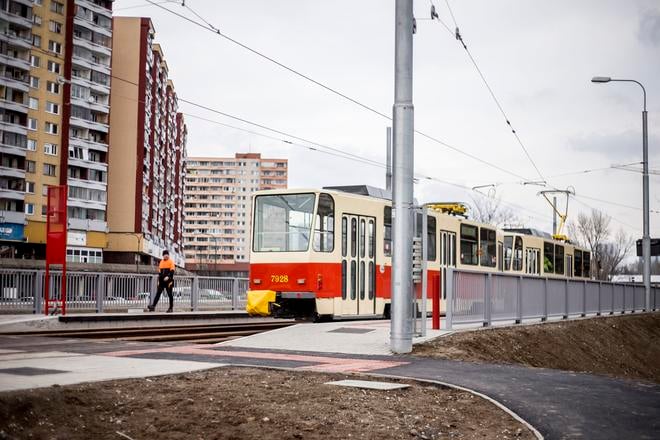Bratislava City Council has introduced modified plans for the second phase of the Petržalka tram project. While the first trams connected the Petržalka district with the Old Town, via the new Old Bridge in July 2016, an extension of the track is planned to be completed by 2020, the TASR newswire reported.
The altered project documentation already contains public comments that the city authorities presented at a public hearing on December 14. The project is accompanied by a cycle path instead of the originally planned four-way track, grass-covered tracks and fully integrated stops, said Bratislava Mayor Ivo Nesrovnal.
“We threw out everything that the public disagreed with and improved the project,” said Nesrovnal, as quoted by TASR.
The tram line, at a length of 3.78 kilometres, will follow the first phase at the Jungmannova stop behind the Old Bridge and will continue to Janíkov Dvor where developers will build a new city quarter called Južné Mesto (Southern City). The final stop will include a cleaning and maintenance depot for 12 tram sets, the Denník N daily reported.
Seven, 65-metre-long stops of the line, Chorvátske Rameno, Gessayova, Zrkadlový háj, Stred, Veľký Draždiak, Lietavská a Janíkov Dvor, will serve trams with a maximum speed of 50 kilometres per hour, according to the plans.
However, experts stressed the lack of line capacity due to a lot of solid crossings with dense traffic. The capacity of the line will not be sufficient which is also seen during the current morning and afternoon periods at the Farského stop, according to Martin Kugla of the Effective and Environmental Transport Initiative. The project should include at least non-collision and non-barrier solutions.
“It should all be done in order to increase capacity and shorten the interval to match any increase in demand in the future,” said Kugla, as cited by TASR.
While the new plan does not interfere with the Chorvátske Rameno, a branch of the Danube River, and implements many of the public's suggestions, it does not ensure a non-collision passage between trams and the bus stop on Lietavská Street, said Martin Fundárek of the Better Transport civic association. The capacity problem could be solved by a reduction of time intervals and the loading of longer tram sets.

On the other hand, Tomáš Šembera, processor of the Environmental Impact Assessment (EIA) for the project, considers the current capacity verified by foreign experts, as adequate. Crossings, through which the trams will pass, will underlie reconstruction and expansion in the future, he said.
“In the future, we will have to see rail and public transport in a much broader context,” said Šembera, as quoted by TASR.
Details of the second phase of the project are not yet definitive and are still subject to change. Its construction should start in 2018 and end two years later, TASR wrote.



 Tram in Petržalka district. (source: Sme)
Tram in Petržalka district. (source: Sme)